Apples and Pears: How to Tell When They’re Ripe
By Guy K. Ames, NCAT Horticulture Specialist
It’s the time of year when apple and pear growers are watching their trees like hawks. . .because the crows are watching the trees, too—like, well, crows.
Ripening fruit becomes attractive to crows and many other critters. The fruit sugars are just too much to resist. And beating the other critters to the fruit is one of the reasons you need to know when to pick. This is not always as clear as you’d think because, when it comes to apples and pears, there is ripe and there is “ripe.”
Ripe for the Picking
Pome fruits, apples, pears and quince, are “physiologically ripe” (the seeds are mature) sometime before they are their sweetest and before they begin falling from their parent trees. This is important because as soon as they are physiologically ripe they can be picked and expected to finish ripening off the tree! Fruit left on the tree past this first stage of ripening will continue to sweeten and change color and texture. There is nothing wrong with letting an apple reach peak sweetness on the tree. But doing so could compromise its firmness and storability. . .and it remains on the tree for the crows to find.
Pears, at least the European types, are a somewhat different story. European-type pears—like the familiar Bartlett and Comice—ripen best off the tree. This is not true for Asian pears, which ripen fine on the tree. If left to ripen on the tree, European pears generally start ripening from the inside out and can be grainy or mushy. These pears are best picked just shy of full ripe (but physiologically ripe) then chilled and “cured.”
Curing is simply a matter of allowing the pear to reach perfection at room temperature on your kitchen counter or table. If you’re in a hurry you can put the pears in a paper bag. Bag with a banana to further hasten the process. To check for perfect ripeness, hold the pear in your hand and push on the fruit near the stem area with your thumb. When the pear gives just a little to your thumb pressure it is ready to eat.
Follow the Signs to Ripe Fruit
But back to physiological ripeness and other indicators of ripeness. Here are some important indicators:
- The hanging fruit begins to change color. Even green apples like Granny Smith and most pears have a subtle color shift when ripening begins in earnest, but the untrained eye might not see it. But red apples will show a more obvious color shift from green toward red as they approach ripeness.
- Some fruit begins to fall. This is usually a solid giveaway, but it doesn’t mean that every fruit on the tree is at exactly the same stage. As fruit approaches maturity, a layer of tissue on the stem accumulates abscisic acid in preparation to drop the apple or pear. The grower can exploit this phenomenon to determine ripeness. Gently lift a fruit from the vertical hanging position to something approaching horizontal. If the fruit is ready, the abscission layer will break cleanly where it joins the twig or spur it is attached to.
- The seeds are hard and brown or black. This is the surest indicator of physiological ripeness because, after all, that’s what this whole thing is all about. The fruit gets sweet to attract creatures like us to eat it and spread the seeds. If the fruit gets eaten too early, before the seeds are ready, then the whole thing was for naught! Seeds that are soft and white are not ready and the fruit isn’t ripe. If you were to pick the fruit before the seed is mature, the fruit will not continue to ripen.
- The fruit pleases your palate. Hey, there’s no substitute for your taste. If you like it, then it’s ready!
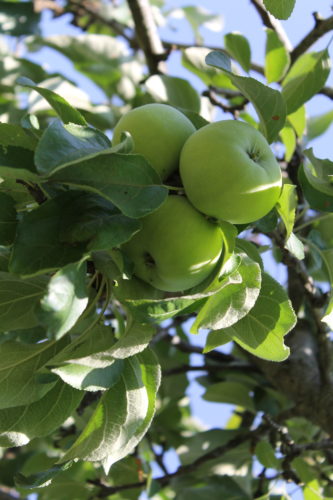 The professionals have other tools, like a starch test and a refractometer for measuring sugars, but even the pros will use the four other indicators listed above.
The professionals have other tools, like a starch test and a refractometer for measuring sugars, but even the pros will use the four other indicators listed above.
Storing Apples and Pears
If your intent is to store your apples or pears, then catching them right when they are first physiologically ripe will allow you to take these fruit while still firm and store them. Sometimes they will last for months depending on what you might have to keep them cool.
Interestingly, it could be argued that pome fruits are still very much alive after picking. They are still respiring (exchanging gases like oxygen and ethylene) and starches are continuing to convert to sugars. We’ve already mentioned that European pears reach their highest flavors after storage and curing. Similarly, many apple varieties don’t achieve their finest, most complex flavors until they’ve been stored for a while.
Happy eating!
Additional Information on Apples and Pears
For more on apple and pear production, see the ATTRA Sustainable Agriculture publications Apples: Organic Production Guide and Pears: Organic Production. You’ll find many other resources on fruit production on the ATTRA website’s Fruits page, including publications, podcasts, and videos.
Guy has written several blog posts on the joys and challenges of fruit production. His previous posts include Pear Trees Exemplify Resilience, Restorative Pruning, Dwarfing Apple Rootstocks: Pros and Cons, Fall Planting Fruit Trees, and Battling Borers in Organic Apple Production.
You can contact Guy or other NCAT agriculture specialists by email at askanag@ncat.org or 800-346-9140.

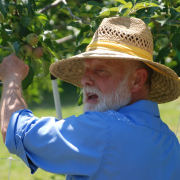
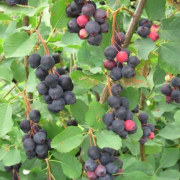
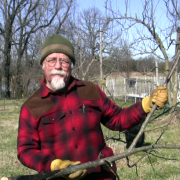
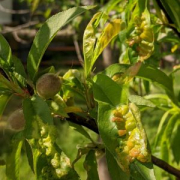

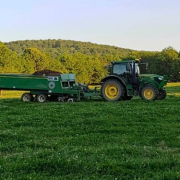 USDA
USDA
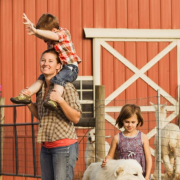 Courtesy Alvina Maynard
Courtesy Alvina Maynard

